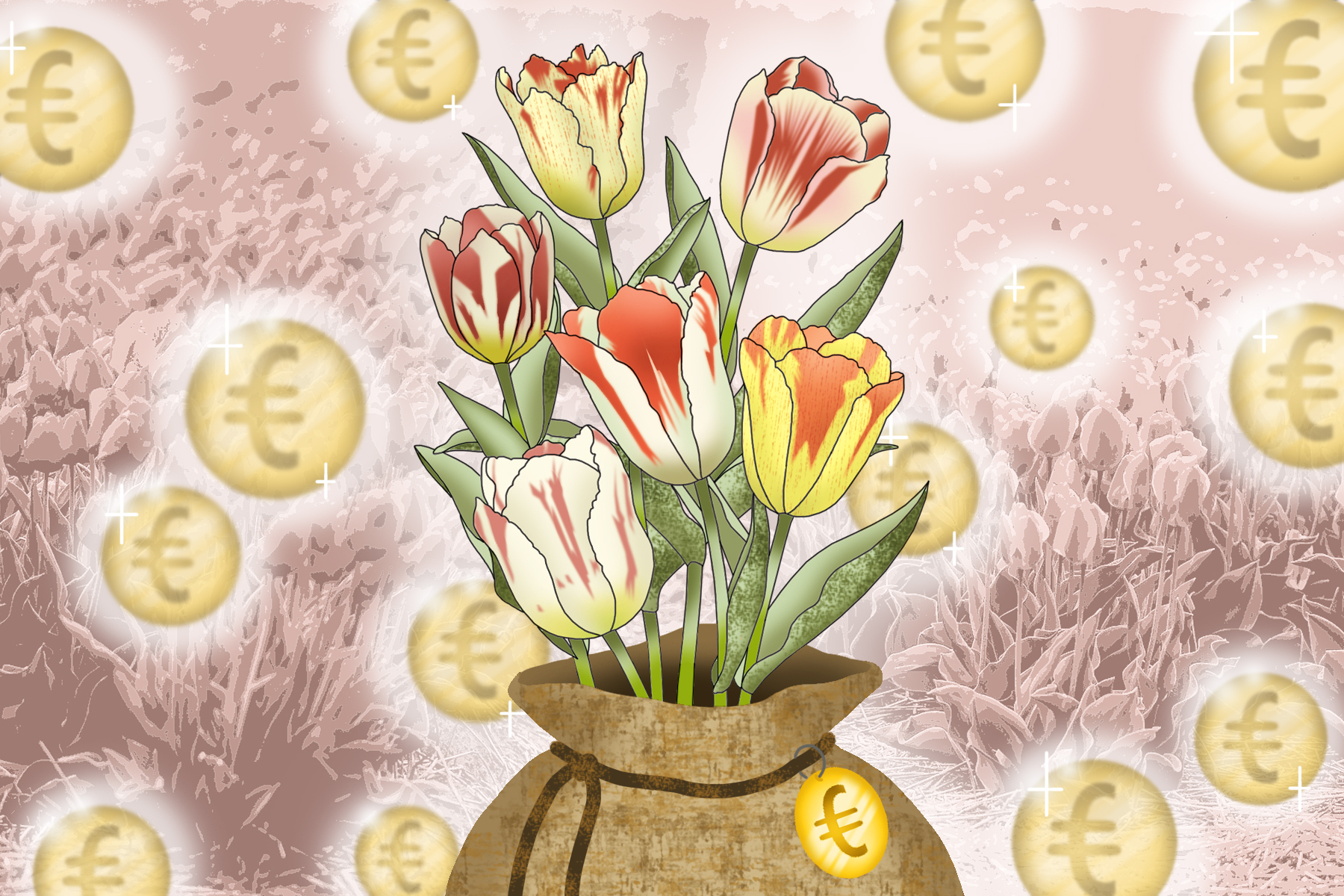Economic bubbles. Whether you love them or hate them, economic bubbles (or speculative bubbles) have been a fact of life as certain as death and taxes for hundreds of years. In life, what comes up must come down, and during a bubble, that “what” is the value of a particular market.
Tulip mania unfolded in the 17th century during the Dutch Golden Age. It stands as one of the earliest and most renowned examples of a speculative bubble, serving as a cautionary tale of the dangers of irrational exuberance in financial markets. This extraordinary episode of economic frenzy revolved around the trading of tulip bulbs, whose prices reached astronomical levels before crashing dramatically within a matter of months. Let’s delve into the origins of tulip mania, the factors that fueled its rapid ascent, the speculative market it gave birth to and the ultimate collapse that led to widespread financial ruin.
Tulip mania began in the late 16th century when the Ottoman Empire introduced the Dutch to tulips. The vibrant colors and unique beauty of the tulip captured the attention of the Dutch people, and the flowers soon became highly sought-after luxury items. As the demand for tulips grew, so did their prices, driven by a scarcity of supply and an ever-increasing interest in the exotic flowers. The tulip trade became a profitable business for florists and tulip farmers, and the bulbs became a status symbol among the wealthy elite.
As tulips gained popularity and their prices soared, a secondary market for tulip bulbs emerged in 1634. This market allowed for the buying and selling of tulip future contracts, essentially enabling speculators to trade tulips they did not yet possess. These future contracts became increasingly elaborate, with options and contingency agreements that allowed investors to participate in the tulip market without physically owning the bulbs. The allure of potential profits attracted a growing number of participants, including merchants, craftsmen and even individuals from the lower socio-economic classes, all hoping to make a fortune out of the precious plants.
The price escalation was nothing short of astounding. Rare and highly desirable tulip varieties commanded exorbitant sums, often surpassing the price of a luxurious home or even a small estate. Tulip bulbs, which were once regarded as a simple horticultural product, had transformed into speculative assets traded feverishly in taverns, marketplaces and exchanges across the Netherlands. The speculative market reached its zenith in late 1636 and early 1637, as prices spiraled out of control and created an atmosphere of wild speculation.
In early 1637, the tulip bubble burst, plunging the Dutch economy into chaos. The trigger for the collapse remains debated, but economists theorize that a sudden lack of buyers as a result of the Bubonic plague caused panic among speculators. As prices took a tumble, those who had borrowed heavily to invest in tulips found themselves unable to repay their debts, leading to bankruptcies and financial ruin. The tulip market crashed, leaving many holding worthless contracts and even more worthless bulbs.
The aftermath of tulip mania was a period of profound economic and social consequence for the Dutch Republic. People’s trust in the financial markets was shattered. The government and legal authorities faced the wreckage of a speculative bubble gone awry. Legal disputes arose over contracts and debts, highlighting the complexities and limitations of the financial system of the time. Dutch society was left grappling with the repercussions of this spectacular economic collapse, and the tulip’s reputation as a symbol of prosperity and wealth was tarnished.
Tulip mania and its economic implications serve as a case study in human psychology and behavioral finance. It serves as a stark reminder of the dangers of irrational exuberance and the allure of quick riches. It shows us how the human desire for novelty, scarcity and the fear of missing out can cloud our judgment and lead us down a path of folly. Tulip mania tickles our funny bones and invites us to reflect on our own tendencies to get swept up in wild trends and speculative frenzies.
But let’s not be too hard on the tulip enthusiasts of the past. After all, their enthusiam for these magnificent flowers sparked a cultural phenomenon that shaped the Dutch landscape and left an indelible mark on history. Tulip mania brought people together, uniting them in a shared fascination and giving rise to a vibrant tulip industry that still thrives today.
Moreover, tulip mania’s legacy extends beyond cautionary tales and comedic anecdotes. The event spurred a reevaluation of financial practices and the development of more sophisticated market mechanisms. It led to reforms and regulations to prevent similar speculative bubbles in the future, laying the groundwork for modern financial systems. Lessons learned from tulip mania continue to inform our understanding of market psychology, risk management and the delicate balance between greed and rational decision-making.
As we stroll through fields of colorful tulips today, let’s remember the wild and wonderful tale of tulip mania. Let’s appreciate the beauty of these blooms while cherishing the wisdom gained from the folly of the past. Tulip mania invites us to embrace the joy and excitement of life’s adventures with a touch of caution and a sprinkling of common sense. And who knows, perhaps the next time we encounter a hot investment opportunity or a fleeting trend, we’ll pause, take a deep breath, and remember the dancing petals that once captivated the hearts and wallets of an entire nation.
















